Cancer rates increasing? - Read this!
Dr. Nikhil Agrawal
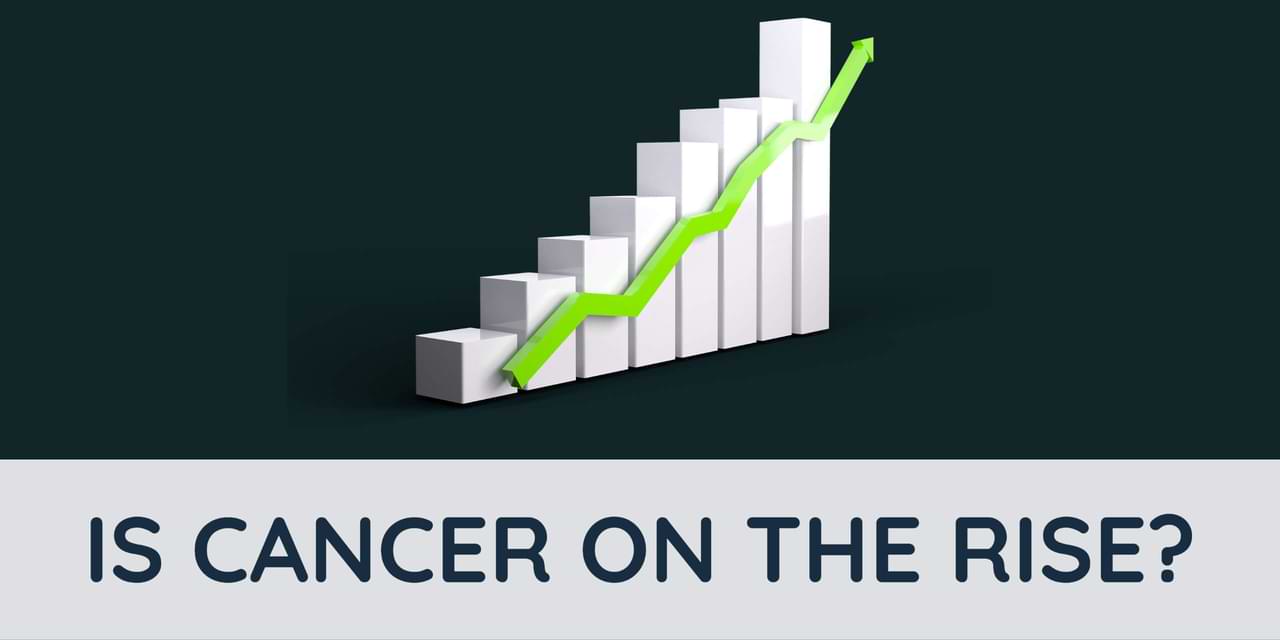
Are cancer cases on the rise?
Increasing cancer rates!
People often remark in OPD, seminars and conversations that cancer is increasing. They are seeing more people getting cancer. The world has become so bad and inhabitable. Sounds familiar!
Cancer is a complex and serious disease that affects many people around the world. It causes cells to grow abnormally and divide uncontrollably, leading to the formation of tumours and the invasion of nearby and distant tissues and organs.
Globally, the number of new cancer cases increased from 18.7 million in 2010 to 23.6 million, an increase of 26.3%. Similarly, the number of global total cancer deaths increased by 20.9% from 8.29 million in 2010 to 10 million in 2019.
Impact of incresing global population and life expectancy
Before getting all worked up and the “see I told you so” feeling, let’s break this up into parts. Though it may seem reasonable to assume that in absolute terms, cancer cases are on the rise, we need to look into two important facts. You would agree that the global population is increasing, and the world is ageing. This is very well illustrated in the chart below. We can see the rising number and proportion of older individuals globally.
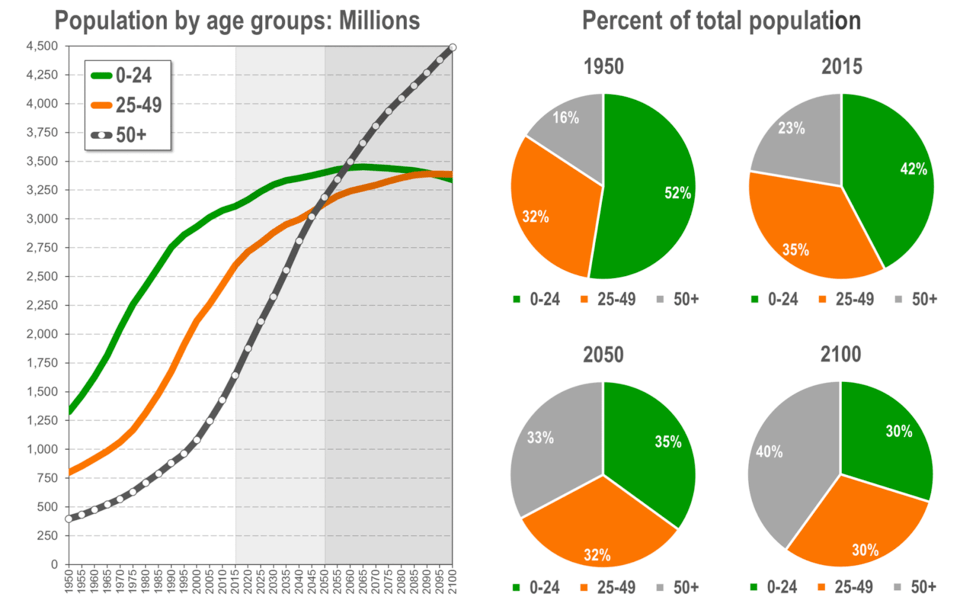
The world population is increasing and getting older.
Age is one of the most important factors that contribute to cancer. As people get older, their risk of developing cancer increases. This is because the cells in the body become more prone to mutations as they age, increasing the likelihood of cancerous growth. In the following chart we can easily see that with increasing age, the cancer rate markedly increases.
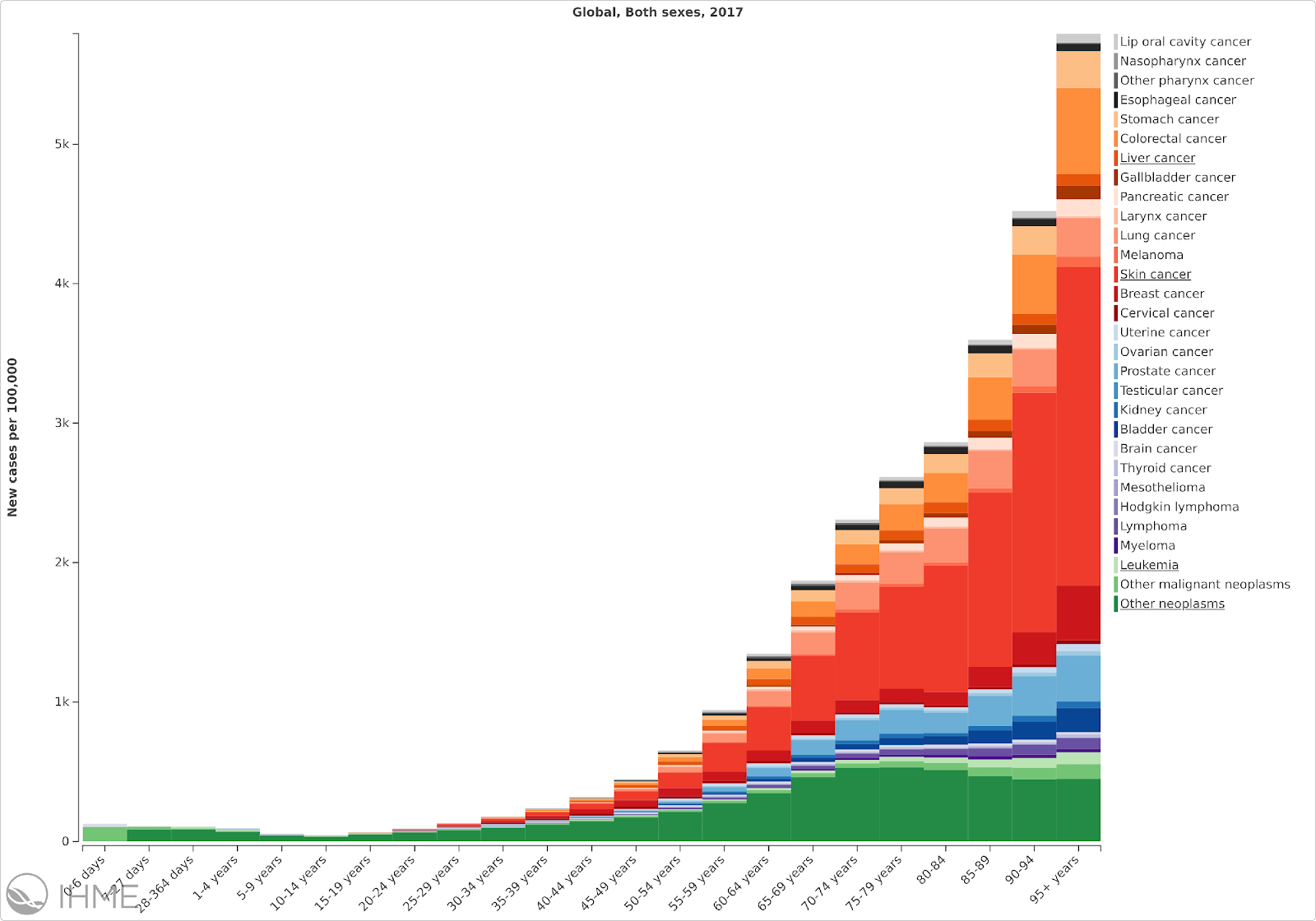
Incidence of cancer increases with increasing age
In recent years, global average life expectancy has increased, and the world's population has grown. Global average life expectancy increased by 5.5 years between 2000 and 2016 and is now 73 years. It has more than doubled in the last century. Between 2010 and 2019 the global population increased from 6.9 billion to 7.7 billion. To put it in perspective, in 200 years, from less than a billion we have increased to over 7 billion.
Hence, a large proportion of the increase in the overall cancer burden can be explained by improving life expectancy and population growth. More individuals mean more cancer and older individuals mean more cancer.
Age-standardised cancer rates
To correct for the effect of changing age structure of the population, cancer rates can be measured as age-standardised. Age-standardised cancer rates refer to a way of measuring cancer incidence (the number of new cases of cancer in a population) that considers differences in the age distribution of different populations. Age standardisation adjusts for these differences by estimating what the cancer rate would be if the populations being compared had the same age distribution.
Despite an increase in total cancer cases and deaths, age-standardised cancer rates have decreased globally. This is because the increase in overall cases is because of population growth and an ageing population. When we account for these factors, the rate of cancer is decreasing.
Age-standardised incidence rates remained the same during this period, with a difference of −1.1% and an annualised rate of change of −0.1%. Age-standardised mortality rates declined by −5.9% during these 10 years, with an annualised rate of change of −0.7%.
So globally, age-adjusted cancer decreased by 1%. The chart below illustrates this well, total deaths and overall death rate because of cancer is increasing but the age-adjusted, cancer death rate is decreasing globally.
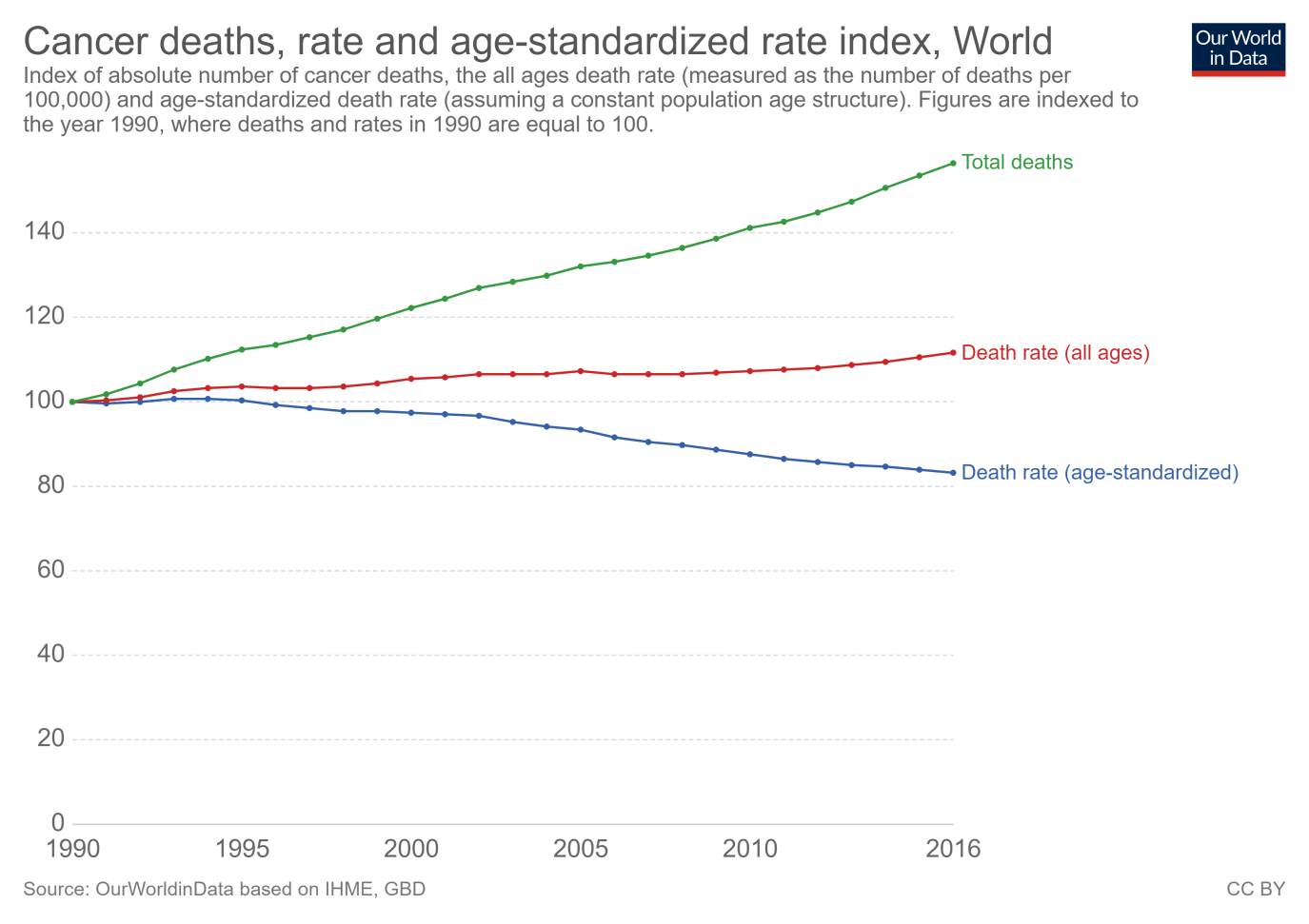
Age-standardised death rates from cancer are decreasing!
Cancer rates are increasing in some countries
Good news! Not for everyone.
Unfortunately, not everyone is benefiting from this trend. The quoted article categorised countries into high, middle and low Socio-demographic Index (SDI), based on rates of education, fertility, and income.
Recent progress in reducing the age-standardised incidence and mortality rates seems concentrated in higher SDI locations, while both rates are still trending upward in lower SDI locations. The largest percentage increases in cancer incidence and mortality during the last decade occurred in the lower Socio-demographic Index (SDI) quintiles. Lifestyle-related cancers, such as lung, colorectal, and skin cancers, are increasing while several cancers from infectious causes – including cervical and stomach cancers – are decreasing. By 2040 over two-thirds of the world’s cancers will occur in low-income and middle-income countries.
Cancer is increasing in India
Coming to India, we are lucky to feature among the countries with the lowest cancer rates. That means we have one of the lowest rates of development of new cases of cancer per one lakh population. But, the age-standardised cancer incidence rate and death rate are also rising (<1% per annum) in our country. Cancer incidence in the country was projected to increase by 12% from 2020 to 2025. There has been a decrease in cancers in India caused by infections, such as cervical, stomach, and penile cancer, and an increase in cancers caused by lifestyle and ageing, such as breast, colorectal, and prostate cancers.
If we compare the cancer death rate in India to global data; we can see that while the age-standardised cancer death rate is decreasing globally, it is marginally increasing in our country.
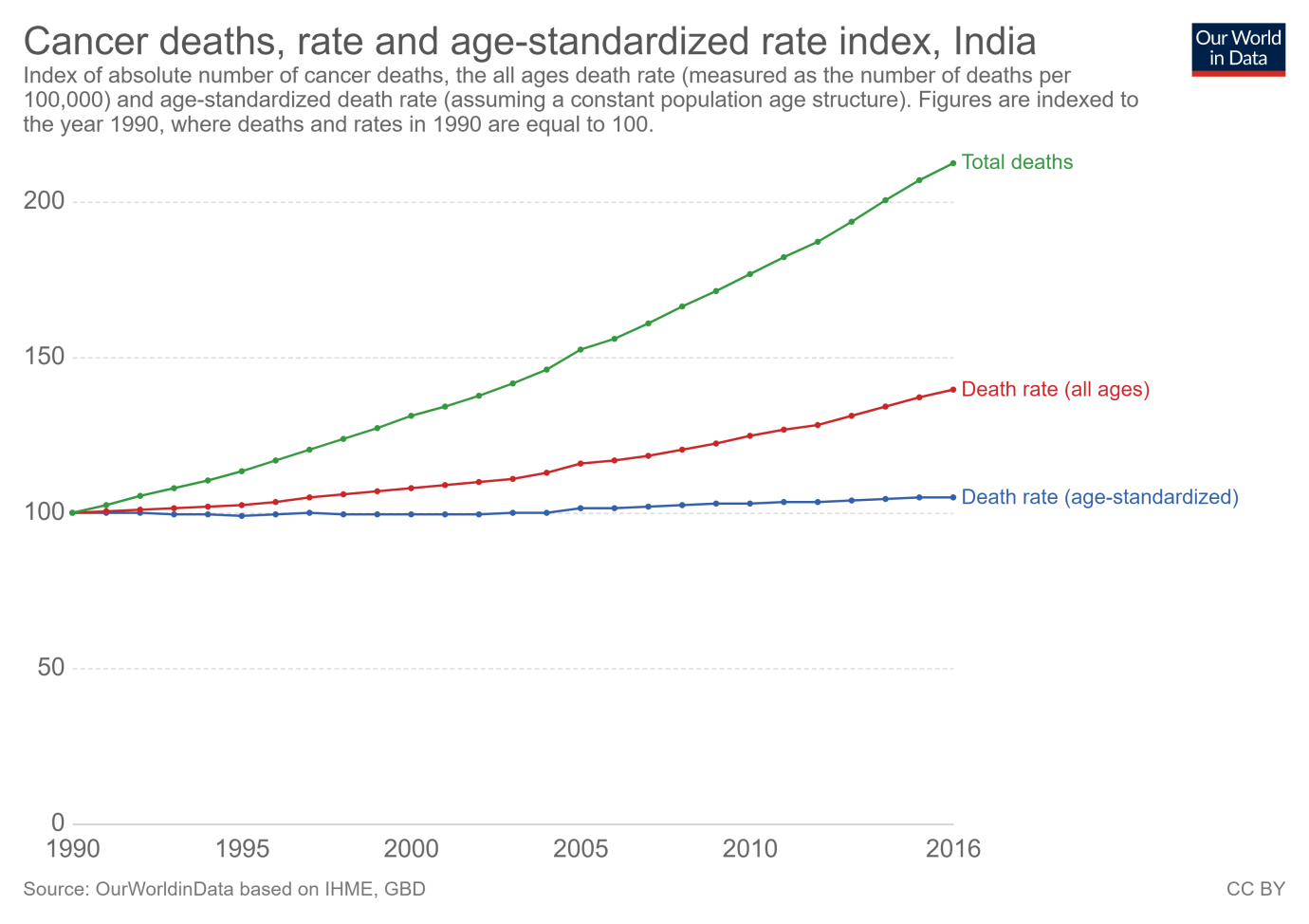
Age-standardised death rate from cancer in India is increasing!
Why cancer is increasing in India
Cancer cases in India are expected to double by 2040 from 15 lakh in 2018. Though the cancer burden is increasing in our country, it is mostly because of the rising population and ageing because of the increasing life span. We also now have better access to healthcare and diagnostic tests, resulting in more people being diagnosed with cancer, which was probably missed earlier. The cancer registries are helping us with better data capture. Moreover, our lifestyle is changing with increasing calorie intake and less physical activity. The adoption of cancer screening programs is also helping diagnose cancers at an earlier stage. These factors are causing an increase in cancer rates in India.
To sum up, you are indeed seeing more individuals with cancer, but it is because there are more people around you and they are older!
Be alert and stay healthy. Happy living!


